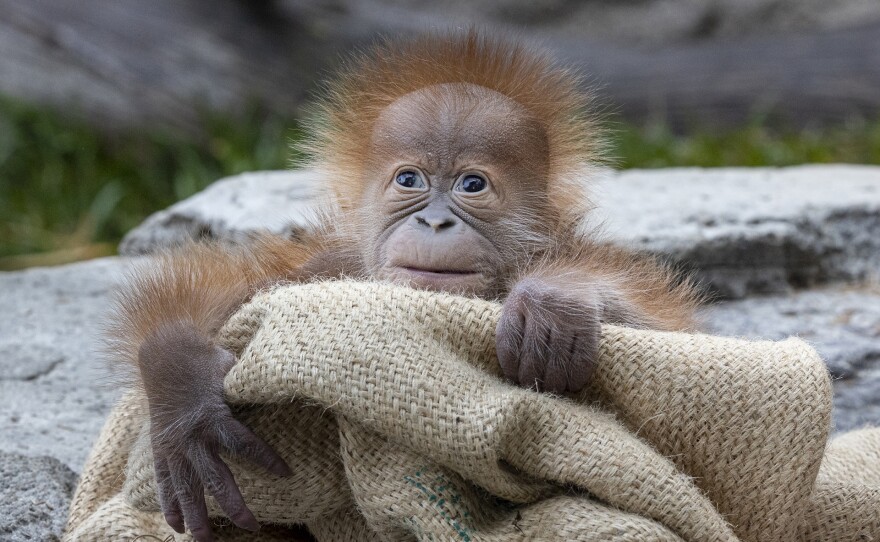Indah, a 35-year-old Sumatran orangutan, gave birth to her third infant earlier this month, the San Diego Zoo announced Tuesday.
The healthy male was born Jan. 4 and has been named Kaja, after an island in Kalimantan — the Indonesian part of Borneo — that houses rehabilitated orangutans prior to release in the wild.
Kaja is the first orangutan born at the zoo since 2014, when Indah gave birth to her daughter Aisha.
RELATED: Satu, orangutan at the San Diego Zoo, dies at 26
"To witness the birth of such a majestic critically endangered animal is a remarkable experience and brings us hope for the future," said Erika Kohler, interim executive director of the San Diego Zoo. "His birth increases the population by one and that is a necessary step in our ongoing efforts to gain a deeper understanding of orangutans so we can conserve the species where they live."
According to the zoo, although the infant orangutan was deemed healthy, Indah experienced some complications following the birth. Zoo team members reached out to experts for help, including neonatal anesthesiologists and OB-GYN specialists.
Indah is recovering and will be in her zoo habitat intermittently, according to the zoo. Both her and her infant's health are being monitored.
"It was extremely rewarding to see the understanding and collaboration put forth by our talented team and community consultants to provide the necessary care for Indah and her infant," said Meg Sutherland- Smith, director of veterinary services at San Diego Zoo Wildlife Alliance. "We will continue to stay vigilant; and at the same time, remain hopeful."
Sumatran and Bornean orangutans are listed as critically endangered on the International Union for Conservation of Nature Red List of Threatened Species. According to IUCN, the decline in their population is mainly due to illegal wildlife trafficking and habitat loss from rampant deforestation, which forces them into closer contact with people.






